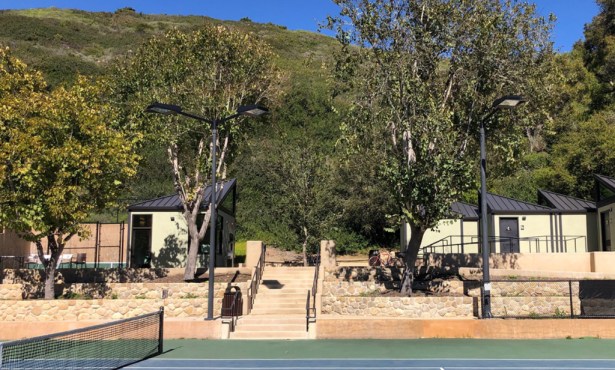A Line In the Sand
Politicians Defend Moratorium on Oil Drilling
by Ethan Stewart
Flanked by a horizon dotted with oil rigs and a parking lot
choked with SUVs, an impressive lineup of local, state, and federal
politicians made a show of unity against offshore oil drilling last
Sunday afternoon. Congresswoman Lois Capps, U.S. Senator Barbara
Boxer, Assemblymember Pedro Nava, Mayor Marty Blum, and City
Councilmembers Das Williams and Helene Schneider gathered at the
Mesa’s Shoreline Park to voice their opposition to the proposed
federal Energy Security Act, which would end a 25-year moratorium
on oil drilling along the California coast. Invoking a political
and “spiritual” mandate, Boxer gestured toward the coastline and
remarked, “California’s coast is a gift to mankind … an asset we
need to protect.”
The speakers — including Cameron Benson from the Environmental
Defense Center — spoke of our country’s “addiction to oil,” and
questioned the logic behind the Republican-backed legislation that
looks to reopen both the East and West coasts for oil exploration.
Capps pointed out that “drilling is the slowest, dirtiest, most
expensive way to solve the problem.” With 37 active leases in the
Santa Barbara Channel not currently being drilled, a proposal for a
near-shore operation in Carpinteria, and about a half dozen other
proposals along the county’s coastal boundaries, Santa Barbara
stands to see some serious changes should the ban be lifted.
Recalling the devastating 1969 oil spill in local waters, Capps
warned ominously, “It is not a matter of if there is going to be an
accident. It is a matter of when.” Capps and Boxer concurred that
the bill is “the most serious challenge we’ve had” to the
moratorium since it was first enacted. Boxer expressed her “real
fear that this thing will be pushed through the Senate during a
lame-duck session” following this November’s election.
All politicians and activists present stressed their belief that
better solutions exist. Boxer in particular touted the virtues of
wind and solar power, and challenged government agencies to
purchase more energy-efficient vehicles instead of the usual gas
guzzlers which, she said, average about 21 miles to the gallon. She
pointed to Brazil as a prime example of energy independence, citing
that nation’s recent initiative to use sugar cane to create
ethanol. “We have an addiction and the Republicans keep feeding the
habit … The technology is there to break it,” insisted the
senator.
Putting that mindset into action, the Community Environmental
Council held a stakeholders’ meeting on wind power last week,
painting a fairly hopeful picture of how wind turbines could impact
the South Coast. According to data presented at the meeting, Santa
Barbara County averages 5,549 gigawatt-hours of electricity
consumption a year. Hypothetical wind farms using 300-foot-tall
turbines sited in the windiest regions of the northern Channel
Islands could generate up to 80,000 gigawatt-hours of energy per
year — roughly a quarter of the entire state’s average yearly
consumption. Ironically, many of the ideal sites for wind
farms — including the Channel Islands, the Gaviota Coast, and
Vandenberg Air Force Base — are all areas fiercely protected from
development by environmental groups.


